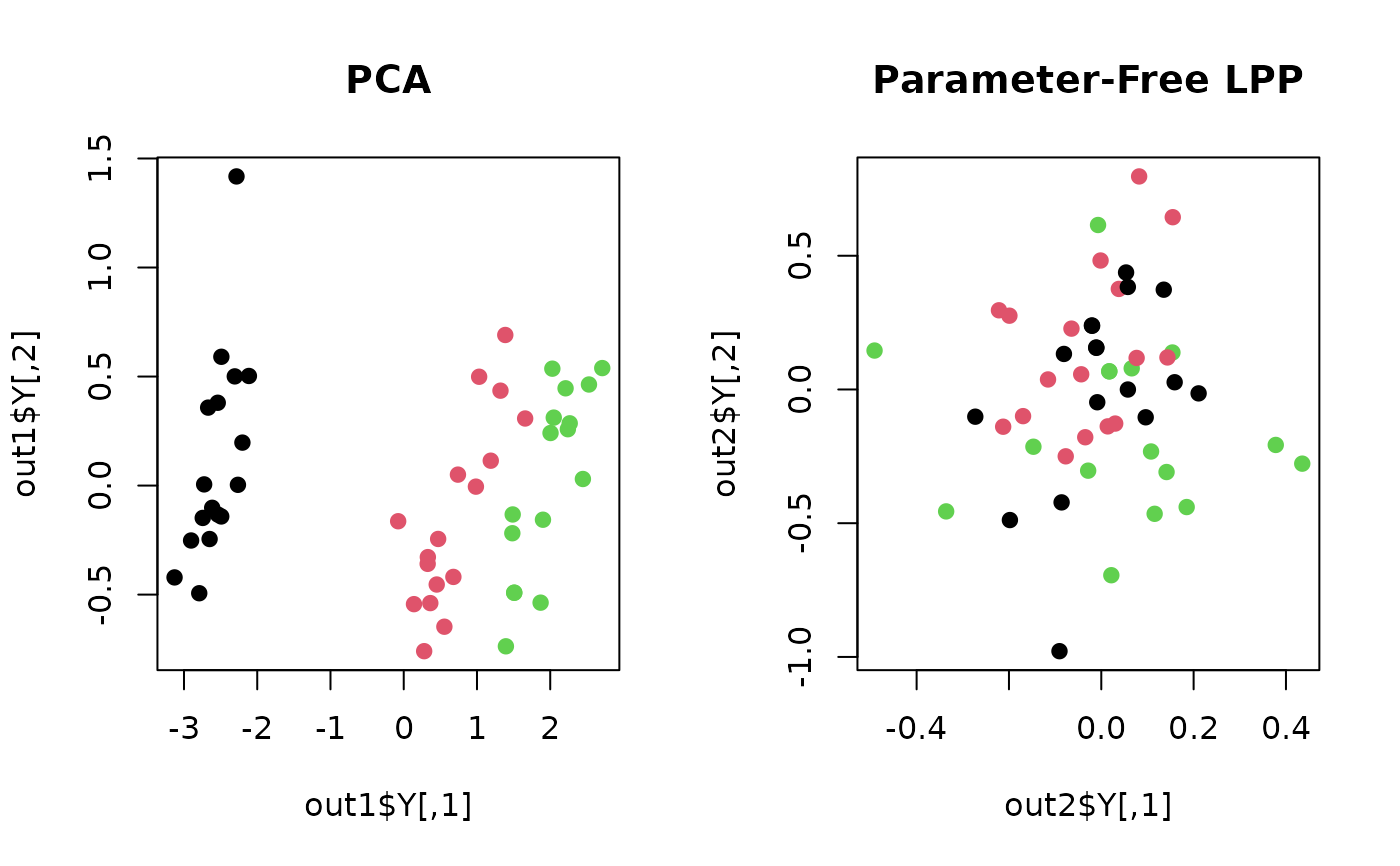Conventional LPP is known to suffer from sensitivity upon choice of parameters, especially in building neighborhood information. Parameter-Free LPP (PFLPP) takes an alternative step to use normalized Pearson correlation, taking an average of such similarity as a threshold to decide which points are neighbors of a given datum.
do.pflpp(
X,
ndim = 2,
preprocess = c("center", "scale", "cscale", "whiten", "decorrelate")
)Arguments
- X
an \((n\times p)\) matrix or data frame whose rows are observations
- ndim
an integer-valued target dimension.
- preprocess
an additional option for preprocessing the data. Default is "center". See also
aux.preprocessfor more details.
Value
a named list containing
- Y
an \((n\times ndim)\) matrix whose rows are embedded observations.
- projection
a \((p\times ndim)\) whose columns are basis for projection.
- trfinfo
a list containing information for out-of-sample prediction.
References
Dornaika F, Assoum A (2013). “Enhanced and Parameterless Locality Preserving Projections for Face Recognition.” Neurocomputing, 99, 448--457.
Examples
## use iris data
data(iris)
set.seed(100)
subid = sample(1:150, 50)
X = as.matrix(iris[subid,1:4])
label = as.factor(iris[subid,5])
## compare with PCA
out1 = do.pca(X, ndim=2)
out2 = do.pflpp(X, ndim=2)
## visualize
opar <- par(no.readonly=TRUE)
par(mfrow=c(1,2))
plot(out1$Y, pch=19, col=label, main="PCA")
plot(out2$Y, pch=19, col=label, main="Parameter-Free LPP")
 par(opar)
par(opar)